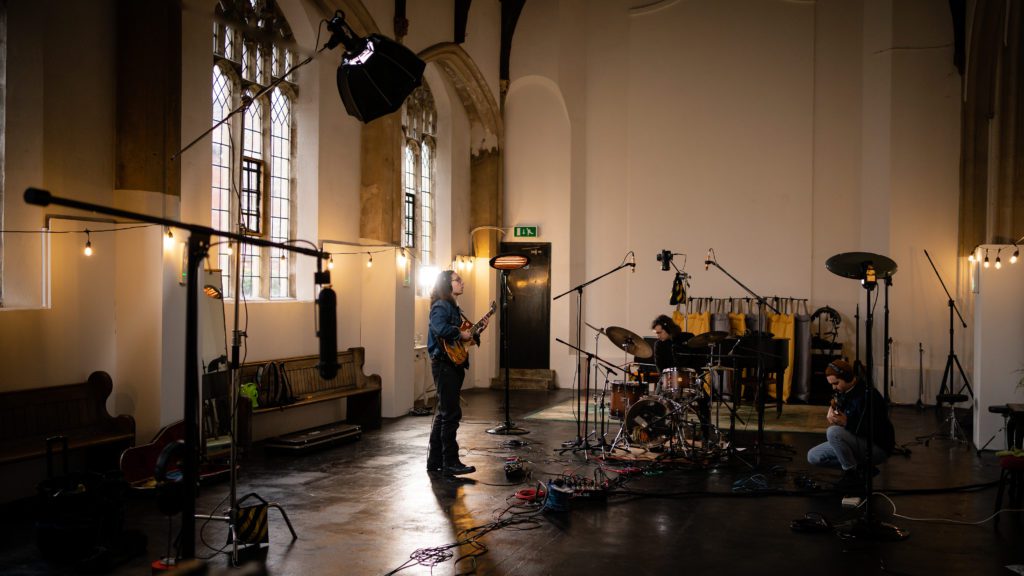Budget
Establishing a budget for the project can have an effect on all of the things listed below. A budget determines the location(s), time spent on the project, the size of crew and what equipment is available for hire. Working with the client to understand this is key so that they can get the most out of their available marketing spend – it is no coincidence after all that Hollywood productions have $ millions to splash on a feature film. Time as well as the right location, equipment and people are vital to the quality of the outcome.
Location
One of the most important factors of a video production is the location(s) of the shoot. A good location can effect how smooth the day runs; the look and feel of the shots and therefore, it can maximise the potential of the shoot.
An accessible ground floor location with on-site parking or loading means that the crew can access the space without any issues and not have to tackle any stairs with heavy equipment or shift gear across a busy town or city.
A location that is already furnished (depending on the project’s budget) is much preferable as well as having options for natural and soft light sources such as big windows or sky lights (and having the ability to close these off if the shot requires). It is also worth considering that the location sits far away from a live building site for example as to not cause any unnecessary delays whilst shooting.
A location with tons of space is always preferable as it allows for better lighting and audio options and you can achieve more depth within the shot, allowing you to achieve that desired shallow focus look. It is also nice to have space for storage and the crew to operate safely and freely. The main factor of a good location is having these options as it allows you to make decisions freely and not have to ‘make do’ with what is pre-existing.
Ultimately, the authenticity and nature of the location is key to what you are shooting/the message you are trying to convey. Most of the considerations made above are tailored towards filming interviews in a documentary setting, though on a more fictional shoot it wouldn’t make sense to film an isolated bathroom scene in a giant warehouse or field.
If you are considering video production for your project, we have lots of locations spread out around Suffolk that are ideal.
Client Expectations & Aim
Meeting with the client as much as possible and discovering their expectations, aim and developing an understanding of their brand are key to a successful video project.
Developing a narrative/idea for the film can be made easier through a brainstorming session with the client and/or pre-production team. Understanding the aim of the project is not only vital to plotting the overall narrative of the video but is also important for tailoring interview style questions in a documentary format or scripting and casting for a fictional advertisement piece. As head of production, you should be thinking about the following at all times and working alongside the company to establish:
Who is the audience?(How does this affect who is cast/the location?)
What is the message?(How is our advert going to convey this message clearly? What will the script contain? How is this consistent with the brand?)
Having access to logos and brand documents ahead of time could be key to storyboarding and saves any time wasted sourcing these files further along in the process where time may be thin.
Recce
One of the key things that can help with all of the above is by conducting a recce. This is an ideal way of imagining what the shoot will look like by visiting the shoot location(s) in advance.A recce allows you to accurately storyboard and envisage what the final product will look like as well as giving you the opportunity to iron out any of the issues you may face with the location. It also gives you the opportunity to work out logistics for the shooting days and the relevant info needed to fill out call sheets for crew. I would advise taking photographs to assist with storyboarding and it gives you more time to assess the situation when you leave/attach in call sheet.
Things to consider:
-
- Any external noise on site?
-
- What to bring: E.g. smaller room requires a wider lens/dark room requires a more complicated lighting rig, etc.
-
- Health & Safety: Is there enough space for stands/the crew, how can we manage cables in this environment?
Having a recce allows you to have a clear structure on the day. You can prepare an equipment list, a shot list and have a general idea of what to expect on the day of shooting when time may be of the essence.
Logistics
Once you have established all of the above, it is important to put together call sheets for the crew and client (if applicable) so that everybody can be best prepared for a successful day of filming.
This sheet may include;
Timings to arrive on site, location, parking & access details, (including a map/images taken on recce), the job of each individual, the aim of the project, scripts, interview questions, equipment & shot list, location amenities such as parking and kitchen/toilet facilities, health and safety and contact details.
Get in touch with us here at Suffolk’s Creative Agency to discuss your video production needs.

